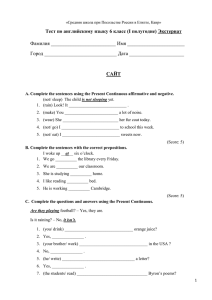носителями языка. Скайп, как и Интернет
реклама
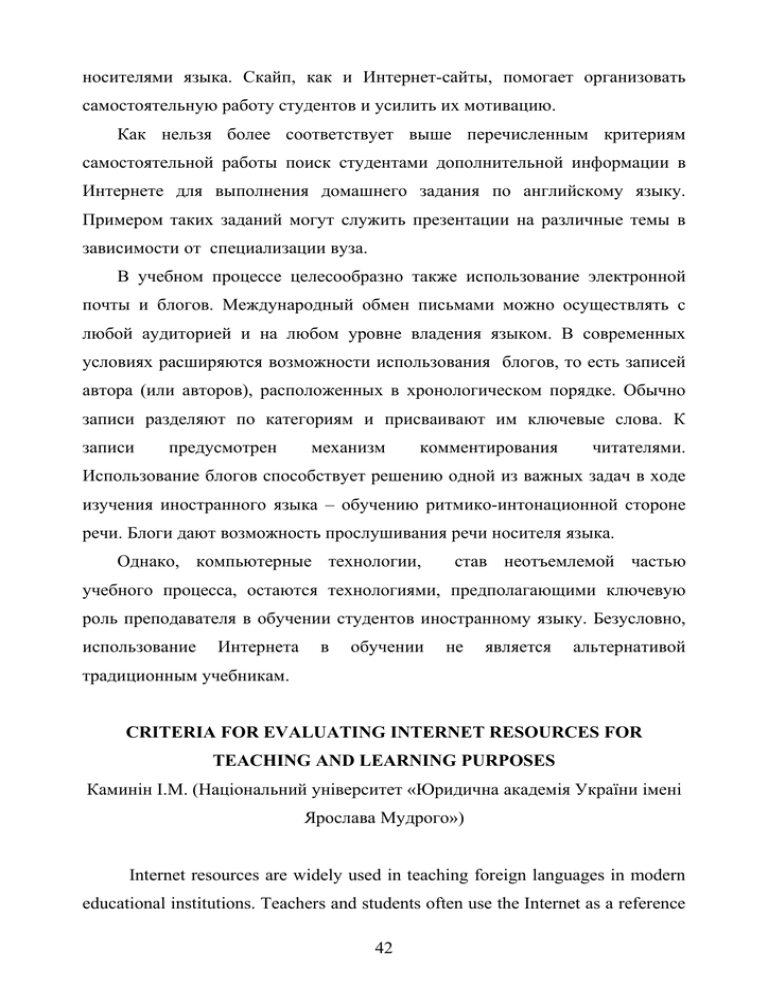
носителями языка. Скайп, как и Интернет-сайты, помогает организовать самостоятельную работу студентов и усилить их мотивацию. Как нельзя более соответствует выше перечисленным критериям самостоятельной работы поиск студентами дополнительной информации в Интернете для выполнения домашнего задания по английскому языку. Примером таких заданий могут служить презентации на различные темы в зависимости от специализации вуза. В учебном процессе целесообразно также использование электронной почты и блогов. Международный обмен письмами можно осуществлять с любой аудиторией и на любом уровне владения языком. В современных условиях расширяются возможности использования блогов, то есть записей автора (или авторов), расположенных в хронологическом порядке. Обычно записи разделяют по категориям и присваивают им ключевые слова. К записи предусмотрен механизм комментирования читателями. Использование блогов способствует решению одной из важных задач в ходе изучения иностранного языка – обучению ритмико-интонационной стороне речи. Блоги дают возможность прослушивания речи носителя языка. Однако, компьютерные технологии, став неотъемлемой частью учебного процесса, остаются технологиями, предполагающими ключевую роль преподавателя в обучении студентов иностранному языку. Безусловно, использование Интернета в обучении не является альтернативой традиционным учебникам. CRITERIA FOR EVALUATING INTERNET RESOURCES FOR TEACHING AND LEARNING PURPOSES Каминін І.М. (Національний університет «Юридична академія України імені Ярослава Мудрого») Internet resources are widely used in teaching foreign languages in modern educational institutions. Teachers and students often use the Internet as a reference 42 source, for example on-line dictionaries, encyclopedias etc. Web resources can be used by teachers as a basis for creating teaching materials (text, audio, video). There are numerous lesson plans, test tasks, exercises, quizzes etc that are offered by different Internet sites and that are often used in the teaching practice. The World Wide Web offers information from all over the world. Because so much information is available, and because that information can often appear “anonymous”, it is necessary to have skills and to know the criteria that can be applied to evaluate the information and the sites that you find and use. Because anyone can create a site on the Internet there is a wide range of materials of different types of quality created by authors of different ranges of authority. Since there are no editors or “filters” that distinguish between reliable information and questionable, it is the teacher’s burden to establish the acceptance, validity, relevance and authorship of what you find on the Internet. What criteria can be used to effectively evaluate Internet sites and on-line information? Here is a set of some of them and the questions that help to identify the content of these criteria: • accuracy and acceptance, the site’s content Is the site’s purpose to inform, to persuade or to entertain? Is it based on opinion or fact? Does it present only one or several points of view? Are there spelling or grammar errors? Are there references or links to other sources? Do the links work? Are they up-to-date? When was the site created and last updated? • authority and coverage Who is the author and is it clearly identified on the site? Can the author be reached through e-mail or post address? Is the author an expert in the relevant field? Is the site created by a known reputable organization? Is the material biased? 43 • audience and relevance Who is the site aimed at? What is it audience? Is the purpose clearly stated? Is the content appropriate for the students? Is the age or language level specified? • educational focus Can the site support learners with different learning styles? • ease of use, navigation and presentation Does the site have ads and banners that distract your attention? Is it easy to navigate the site? Does it have a site map? Does it have a search device? Is the logically organized? Is it easy to locate the information? Can the site be accessed with standard equipment and software or are there special software, password etc requirements? • the site’s URL analysis What is the extention of the site’s address? It can sometimes provide information about the origin of the site, e.g. .org, .com, .edu, .gov These criteria can be used by teachers to evaluate web resources that are used for teaching purposes. Effective web resources evaluation should also become an integral component of a teaching process and students should be taught how to effectively evaluate the web resource that they find and use. УПРОВАДЖЕННЯ МЕТОДУ ПРОЕКТІВ ЯК ТЕХНОЛОГІЇ ІНТЕРАКТИВНОГО НАВЧАННЯ У ЗМІСТ ПІДРУЧНИКА З АНГЛІЙСЬКОЇ МОВИ Козка І.К. (Харківський національний педагогічний університет імені Г.С.Сковороди) Основні положення концепції, за якою сконструйовано зміст сучасного підручника з англійської мови, повинні базуватися на інноваційних 44
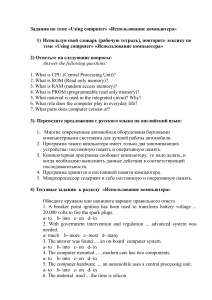
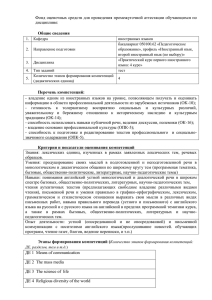
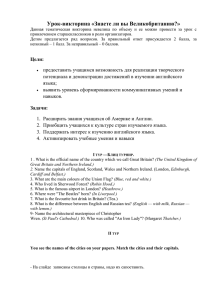


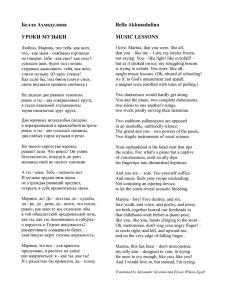
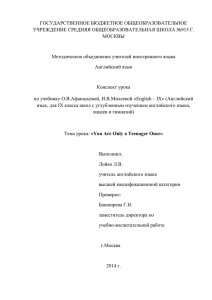
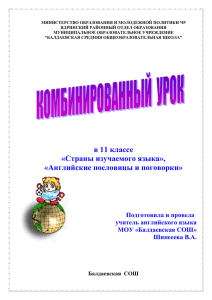


![[mi:t] meet](http://s1.studylib.ru/store/data/004721661_1-4da93f2e6695c15d6407bc94a6c7d352-300x300.png)
